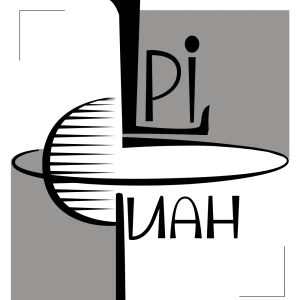Revealing mechanisms of PL properties at high and low temperature regimes in CdSe/ZnS core/shell quantum dots
Publication type: Journal Article
Publication date: 2018-07-24
scimago Q2
wos Q3
SJR: 0.580
CiteScore: 5.1
Impact factor: 2.5
ISSN: 00218979, 10897550
General Physics and Astronomy
Abstract
Here, we report on the strong temperature dependence of PL properties in CdSe/ZnS core/shell quantum dots, within a broad temperature range of 80–500 K. Our results demonstrate different PL quenching mechanisms in high and low temperature ranges. In the low temperature range of below 320 K, PL quenching is proved to be dominated by thermally activated carrier escape. While in the high temperature range of above 320 K, PL undergoes additional quenching because of surface trapping by the thermally created surface defects, which is calculated and proved by the rapidly decreasing PL lifetime. Our calculating result proves that the model of thermally activated carrier escape is also responsible for PL quenching in the high temperature range. However, the red-shifted PL peak energy and the broadened FWHM with increasing temperature follow the same mechanisms in the whole temperature range. The former is due to the temperature-dependent band-gap shrinkage and the latter is due to the exciton scattering with acoustic and longitudinal-optical phonons.Here, we report on the strong temperature dependence of PL properties in CdSe/ZnS core/shell quantum dots, within a broad temperature range of 80–500 K. Our results demonstrate different PL quenching mechanisms in high and low temperature ranges. In the low temperature range of below 320 K, PL quenching is proved to be dominated by thermally activated carrier escape. While in the high temperature range of above 320 K, PL undergoes additional quenching because of surface trapping by the thermally created surface defects, which is calculated and proved by the rapidly decreasing PL lifetime. Our calculating result proves that the model of thermally activated carrier escape is also responsible for PL quenching in the high temperature range. However, the red-shifted PL peak energy and the broadened FWHM with increasing temperature follow the same mechanisms in the whole temperature range. The former is due to the temperature-dependent band-gap shrinkage and the latter is due to the exciton scattering with acou...
Found
Nothing found, try to update filter.
Found
Nothing found, try to update filter.
Top-30
Journals
|
1
2
3
|
|
|
Advanced Science
3 publications, 14.29%
|
|
|
Journal of Applied Physics
2 publications, 9.52%
|
|
|
Journal of Physical Chemistry C
2 publications, 9.52%
|
|
|
IEEE Sensors Journal
2 publications, 9.52%
|
|
|
Applied Physics Letters
1 publication, 4.76%
|
|
|
Tribology Letters
1 publication, 4.76%
|
|
|
Nanotechnology
1 publication, 4.76%
|
|
|
ACS applied materials & interfaces
1 publication, 4.76%
|
|
|
Journal of the American Chemical Society
1 publication, 4.76%
|
|
|
Journal of Materials Science: Materials in Electronics
1 publication, 4.76%
|
|
|
Materials Chemistry and Physics
1 publication, 4.76%
|
|
|
Russian Chemical Reviews
1 publication, 4.76%
|
|
|
Scientific Reports
1 publication, 4.76%
|
|
|
ACS Omega
1 publication, 4.76%
|
|
|
Journal of Luminescence
1 publication, 4.76%
|
|
|
1
2
3
|
Publishers
|
1
2
3
4
5
|
|
|
American Chemical Society (ACS)
5 publications, 23.81%
|
|
|
AIP Publishing
3 publications, 14.29%
|
|
|
Wiley
3 publications, 14.29%
|
|
|
Springer Nature
3 publications, 14.29%
|
|
|
Elsevier
3 publications, 14.29%
|
|
|
Institute of Electrical and Electronics Engineers (IEEE)
2 publications, 9.52%
|
|
|
IOP Publishing
1 publication, 4.76%
|
|
|
Autonomous Non-profit Organization Editorial Board of the journal Uspekhi Khimii
1 publication, 4.76%
|
|
|
1
2
3
4
5
|
- We do not take into account publications without a DOI.
- Statistics recalculated weekly.
Are you a researcher?
Create a profile to get free access to personal recommendations for colleagues and new articles.
Metrics
21
Total citations:
21
Citations from 2024:
9
(42.86%)
Cite this
GOST |
RIS |
BibTex |
MLA
Cite this
GOST
Copy
Li B. et al. Revealing mechanisms of PL properties at high and low temperature regimes in CdSe/ZnS core/shell quantum dots // Journal of Applied Physics. 2018. Vol. 124. No. 4. p. 44302.
GOST all authors (up to 50)
Copy
Li B., Liu W., Yan L., Zhu X., YANG Y., Yang Q. Revealing mechanisms of PL properties at high and low temperature regimes in CdSe/ZnS core/shell quantum dots // Journal of Applied Physics. 2018. Vol. 124. No. 4. p. 44302.
Cite this
RIS
Copy
TY - JOUR
DO - 10.1063/1.5031056
UR - https://doi.org/10.1063/1.5031056
TI - Revealing mechanisms of PL properties at high and low temperature regimes in CdSe/ZnS core/shell quantum dots
T2 - Journal of Applied Physics
AU - Li, Bo
AU - Liu, Weilong
AU - Yan, Lin
AU - Zhu, Xiaojun
AU - YANG, YANQIANG
AU - Yang, Qingxin
PY - 2018
DA - 2018/07/24
PB - AIP Publishing
SP - 44302
IS - 4
VL - 124
SN - 0021-8979
SN - 1089-7550
ER -
Cite this
BibTex (up to 50 authors)
Copy
@article{2018_Li,
author = {Bo Li and Weilong Liu and Lin Yan and Xiaojun Zhu and YANQIANG YANG and Qingxin Yang},
title = {Revealing mechanisms of PL properties at high and low temperature regimes in CdSe/ZnS core/shell quantum dots},
journal = {Journal of Applied Physics},
year = {2018},
volume = {124},
publisher = {AIP Publishing},
month = {jul},
url = {https://doi.org/10.1063/1.5031056},
number = {4},
pages = {44302},
doi = {10.1063/1.5031056}
}
Cite this
MLA
Copy
Li, Bo, et al. “Revealing mechanisms of PL properties at high and low temperature regimes in CdSe/ZnS core/shell quantum dots.” Journal of Applied Physics, vol. 124, no. 4, Jul. 2018, p. 44302. https://doi.org/10.1063/1.5031056.












